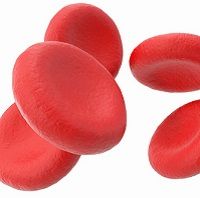Article
Novel Therapeutic Approach for Arthritis Treatment
Author(s):
Patients with arthritis may eventually be able to use their own "microvesicles" as treatment for their disease.

Patients with arthritis may eventually be able to use their own “microvesicles†as treatment for their disease, according to findings published in Science Translational Medicine.
Â
Researchers from Queen Mary, University of London explained that the microvesicles are small subcellular structures measuring 0.05 to 1 micrometer in diameter made up of fluid enclosed in a membrane. They were once thought to be impenetrable to therapies and travel into cartilage cells to deliver therapies.
Â
The researchers used genetically modified mice which had reduced vesicle production in order to show that their inflammatory arthritis was reduced when treated with microvesicles. The microvesicles also demonstrated the ability to lead cartilage protection when the experiment was repeated on human cells.
Â
“Cartilage has long been thought to be impenetrable to cells and other small structures, leading to strong limitations in our abilities to deliver therapies for arthritis,†lead author Professor Mauro Perretti explained in a press release.
Â
“To our surprise, we’ve now discovered that vesicles released from white blood cells can ‘travel’ into the cartilage and deliver their cargo, and that they also have a protective effect on cartilage affected by arthritis,†the authors wrote.
Â
Â
They continued: “Our study indicates that these vesicles could be a novel form of therapeutic strategy for patients suffering from cartilage damage due to a range of diseases, including osteoarthritis, rheumatoid arthritis and trauma. Treating patients with their own vesicles may only require a day in hospital, and the vesicles could even be ‘fortified’ with other therapeutic agents, for example, omega 3 fatty acids or other small molecules.â€
Â
In addition, the researcher found that FPR2/ ALX, one specific cell receptor, was involved in protecting cartilage tissue. The researcher believed it could be targeted by new small molecules for the treatment of diseases that erode the cartilage.
Â
“By using the body’s own transport system to get new and current therapeutic agents directly into the cartilage, holds the promise that we will be able to reduce joint damage more effectively than ever,†added Arthritis Research UK’s medical director, Stephen Simpson. “A healthy and intact joint results in less pain and disability improving the quality of life of millions of people living with arthritis in the UK.â€
Â
These findings may represent the future opportunities for therapeutic approaches for arthritis treatment, the authors believe. However, the researchers added that studies in humans will be needed to confirm the success of this approach.
Â
Â




